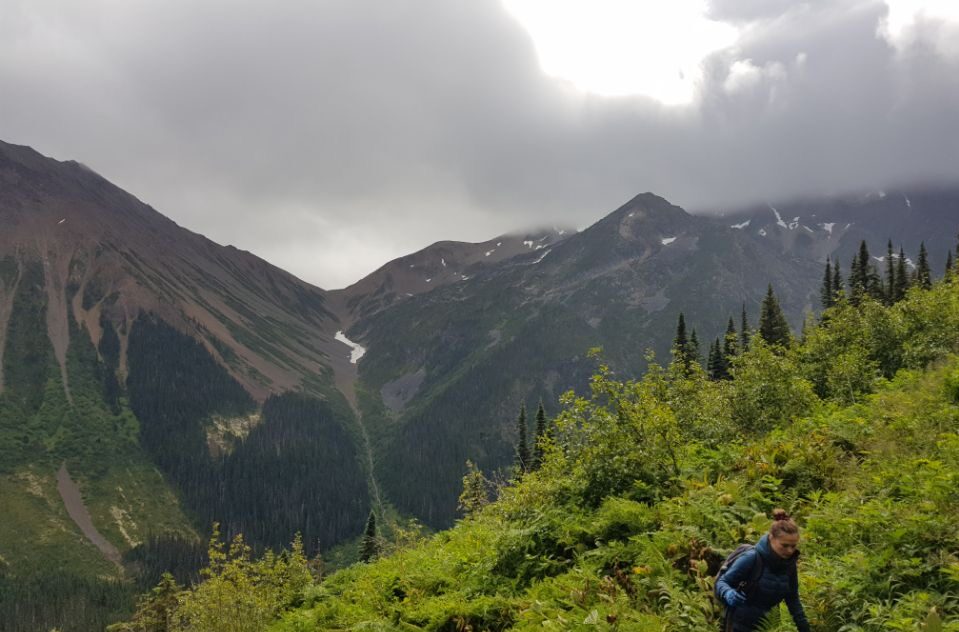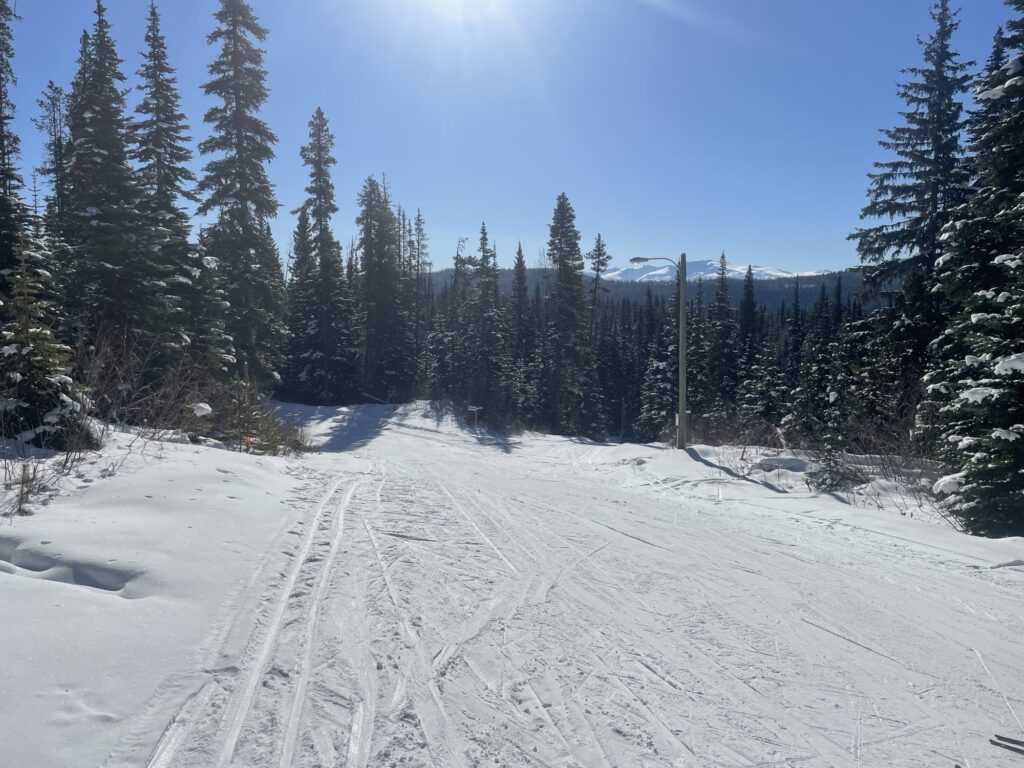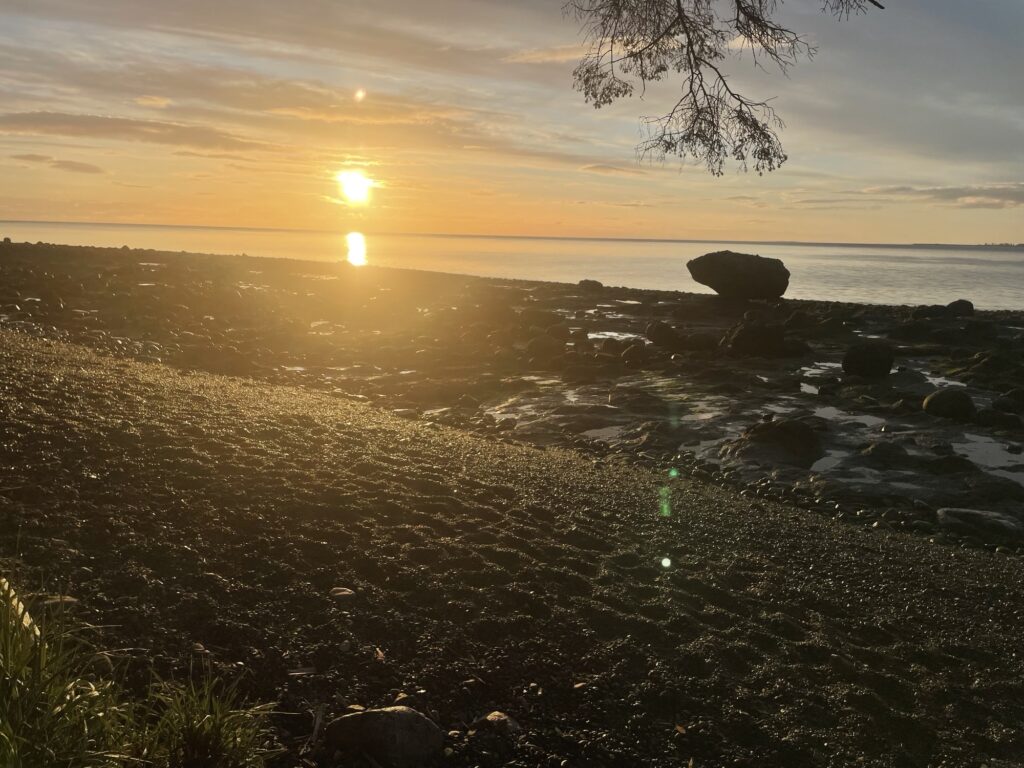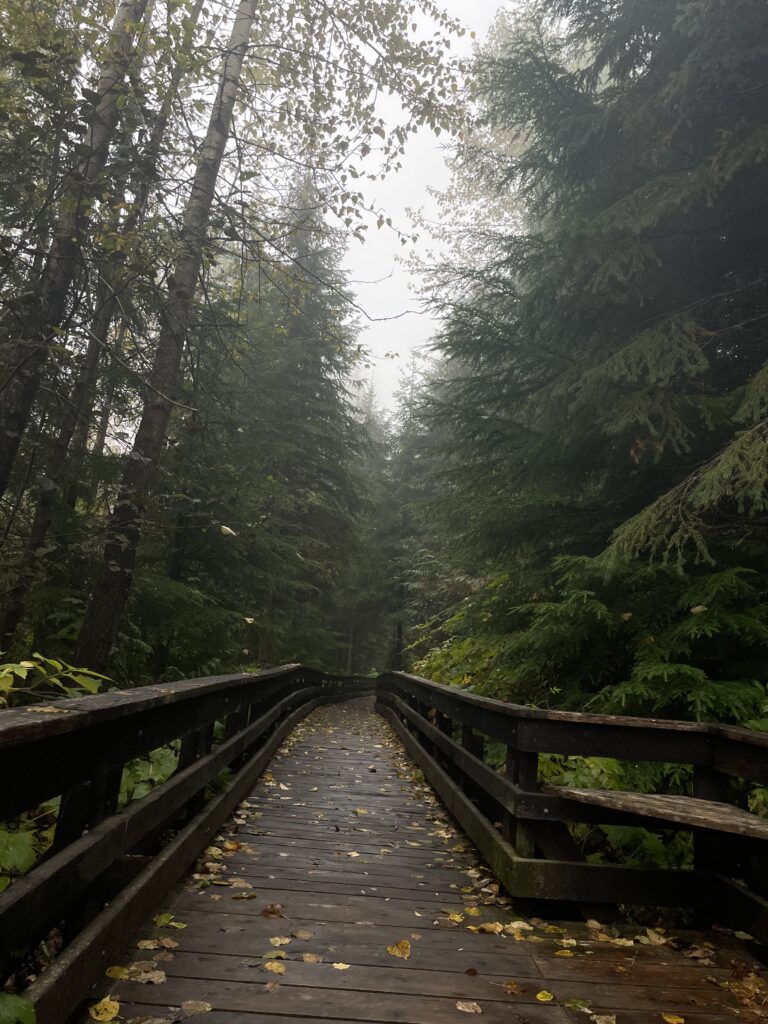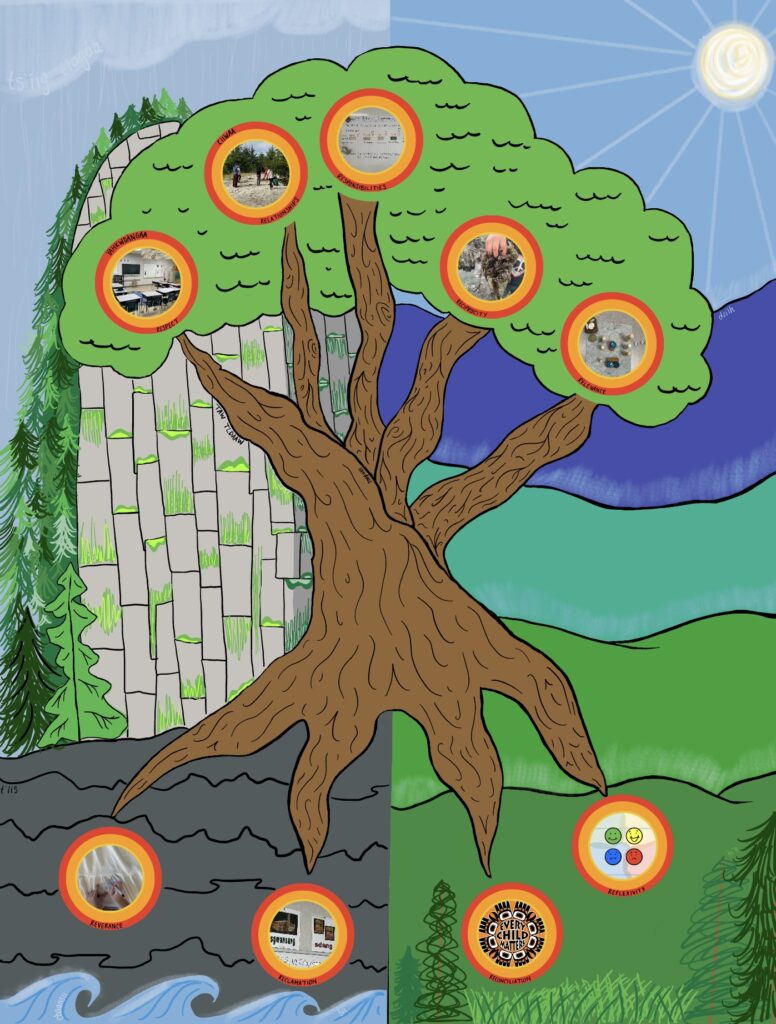Language Arts – Figurative Language
I created this unit for my Education 490 practicum in a Grade 4/5 class on Haida Gwaii. This unit can be catered to fit any grade level and involves and element of land-based learning and was scaffolded accordingly to provide students with a complete understanding.
We went over the following literary devices in this order during the unit. I felt that this order would help scaffold the learning effectively for the students I had in mind while designing this unit.
1.) Similes & Metaphors
2.) Personification
3.) Alliteration
4.) Imagery
5.) Onomatopoeia
Similar to the Data and Graphing unit that was constructed for this same class, I made a “cheat sheet” on Notability that I would project onto the screen and fill out as the students would respond to group discussion. I printed out each student a cheat sheet that they could personalize and refer back to whenever needed. Attached below is the sample cheat sheet that this class came up with, along with a cheat sheet template available for download and use.
We started every lesson in this unit with the cheat sheet. To begin I would ask students what they remember about the previous device and asked them to come up with examples. This example could be something from their sheet or one they came up with on the spot. I wrote down every example that the students were offering up in discussion, but told the learners only to write down what they felt would be helpful for them.
After a brief recall, I would ask students to guess or anticipate what the device of the day was and where it may be used. It is important to note that everything written on this sample was collaboratively created. Most of this work came from the class while I guided or rephrased where necessary. One of the cool things about this template is how it can be adapted to fit the needs and interests from class to class.
I forgot to give “Imagery” its own section in the original and had to add it at the bottom when teaching, but it is included here in the correct order.
Similes & Metaphors
As previously discussed, we started with the cheat sheet and discussing that figurative language are tools that we can use to “spice up” our writing. I asked students what their guesses were, before providing them with the definition.
I did not use learning activities that I created, therefore I have not included them in this post. The gist of these activities was identifying and similes and metaphors through various activities such as fill – in the blanks, true or false, or finish the sentence activities.
Personification
The personification lesson followed the exact same structure as the similes and metaphors lesson. Initially what I had planned was to go for a walk outside and identify non-humans that we could give human traits to along the way. We did not end up doing this as it was pouring rain outside and the students were not very keen to go outside again after just coming in from recess.
Many of the students were not finished the work from the previous day, so we spent the rest of the time either catching up on that work or starting a new exercise combining similes, metaphors, and personification.
I also did not include this resources because it does not belong to me, but the gist of it was a passage where students had to identify the literary devices they have learned so far. To conclude we marked the work collaboratively and compared answers.
Alliteration:
Students at this point were used to the routine with our language arts lessons, so they grabbed their cheat sheets right away and got started. We spent a long time playing around with different sentences that use alliteration. As a visual to supplement the lesson I showed them the following video. They were reading Harry Potter throughout the year, so they thought this video was pretty neat.
Following this video, we played Kahoot. This was the students first time playing Kahoot and they absolutely loved it. Kahoot became a very valuable and engaging tool for this group of learners. I made this Kahoot and catered it to the specific literary devices that we were learning about, although there are various other premade ones that are also very well done. Below is the link to the Kahoot that we used in this class available for use.
Literary Devices Kahoot (Similes, Metaphors, Personification & Alliteration)
Imagery
Following our initial class discussion and use of the cheat sheet, we went down to the beach to use our senses to describe what’s around us. I let the students wander around the beach by the school and encouraged to think about how things felt around them, what they saw, heard, tasted, touched, and smelled. I wandered around with them and would ask them questions to get them to think about how they might describe what they are experiencing around them using imagery. We had a period for sharing at the beach before returning to the school.
Reflections: In post-conferencing with my Coaching Teacher after this lesson, she recommended that using sit spots for this activity to eliminate distractions and allow for students to focus in on the use of their senses. This is something that I would definitely consider using if I were to do this activity again. I feel like the sit spots would help students focus on their senses more rather than simply going down to the beach. This would offer more differentiation between going for a movement break to the beach and an actual lesson.
Onomatopoeia
This was my favorite lesson out of the whole unit. I feel like the students really liked this one as indicated by the notes the contributed to our cheat sheet. We had a great brainstorm session with this one that went one for quite a while.
We went out on the land for this lesson. We went back to the beach again and I asked students to make sounds and then come up with a word to represent that sound. They loved getting to be out on the land and experimenting with different things around to “invent” a song and then make a corresponding word.
They were having an awesome time with this so I let them continue with what they were working on before bring them back into a Talking Circle at the beach. We each shared one sound we heard or made, and then shared the word that we came up with to represent the sound.
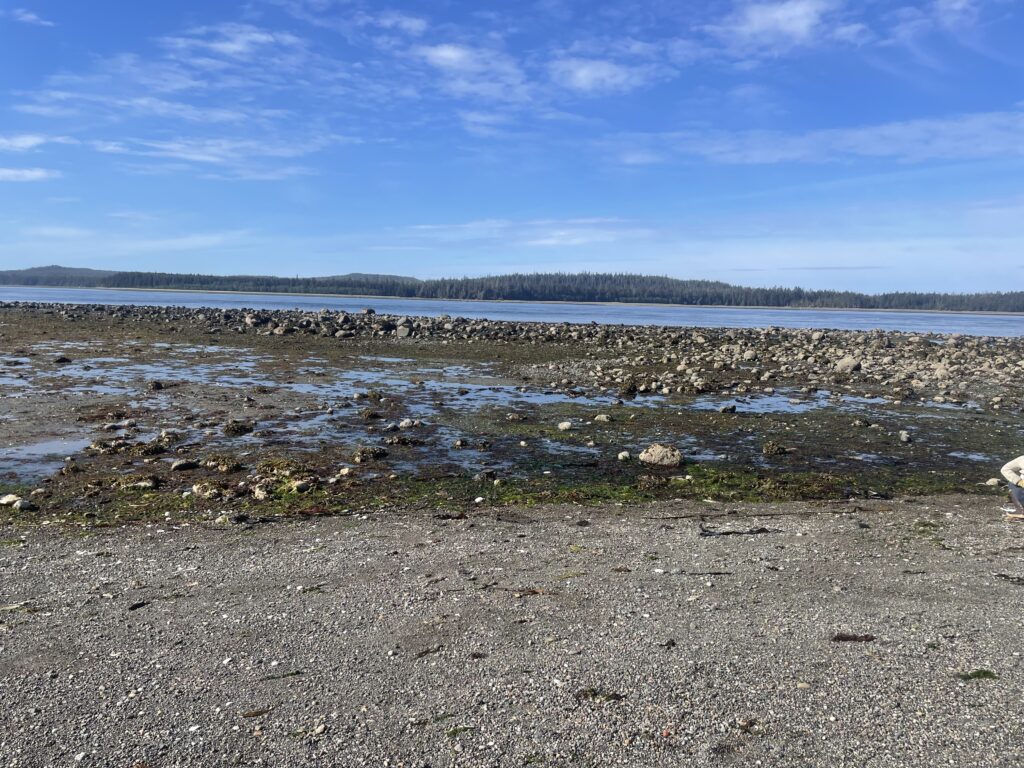
Reflections: Overall, the lesson went well. I was very happy with the level of engagement, and this was the literary device that students were most excited about. The lesson created space for experimentation. Students were exploring what kind of sounds things make from around the classroom and creating corresponding words and relating the content of the lesson the past experiences whether it was examples of onomatopoeia they have seen in books or sounds they have heard in their life and coming up with a word for that. Going outside went well as students were able to learn on the land and demonstrated an awareness of what was around them. Learning on the land is something I am passionate about and want to embed into my practice, so I am glad I had the opportunity to explore how to interweave language arts with outdoor learning. When we came back to the classroom after our activity outside, I introduced the food menu project and students were very excited.
During that transition into lunch students regularly get time to play literacy games. I gave students the option to either brainstorm ideas for their menu or play literacy games. A suggestion from my Practice Evaluator was to go with the excitement of the class and encourage them to brainstorm for the last few minutes. This is something that I would do differently if I were to teach this lesson again. The closure of this lesson informed students of the next steps in completing the language arts unit on literary devices. As previously discussed, this lesson was formally observed by my Practice Evaluator. I did not go into the lesson with a specific area of focus in mind, I just wanted to see how the session went and be adaptable to whatever the students found interesting. Some areas that my P.E. found interesting during our post-conference were my ability to ask questions to provoke students’ thinking and how we moved through the activity as a group. I felt that this was a lesson where all students could feel successful and completed the activities proficiently which was awesome to see.
We returned back to the classroom so I could give them their final assignment. I mainly used formative assessment for this unit through observation and conversations with very little summative work. This final assignment served as a final summative tool for students to be creative and use what they have learned.
Final Assignment – Figurative Language Food Menus
I came up with this idea during my first semester of the Education program at UNBC for my Inclusive Education class. I was very excited that I could test it out with students to see how it worked and what I could tweak for next time.
The students were bubbling over with ideas when I told them what the final project was gonna be which was so awesome to see. I revealed their task to them after showing them my example which I will include below. I made it a video for design consideration purposes so students who struggle with reading or have visual impairment are able to access the content.
For their success criteria, students needed to include a minimum of three different menu items and three different literary devices to go with each item. I allowed for partners, but if students were paired up they each needed to come up with three items and three corresponding literary devices. Most students went beyond that and went into great detail with their menus. All of the menus were reflective of students interests and everyone as able to extend with this activity in some way which was really awesome to see.


This was a very fun unit that I would love to try again with the tweaks I would make going forward. Haaw’aa for reading and I hope you found this helpful.
